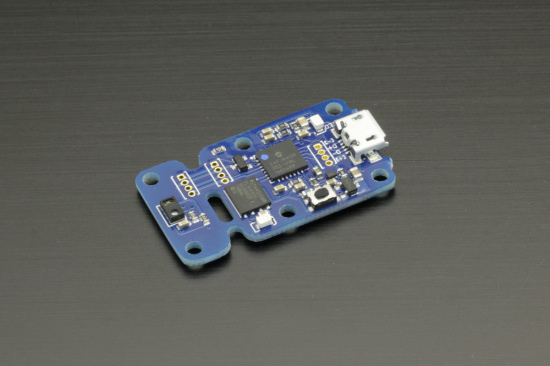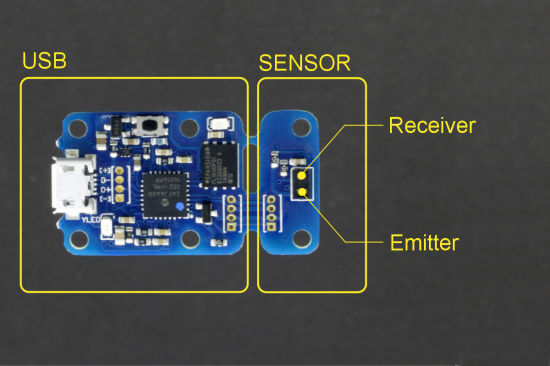![]() This week, we present the latest addition to the Yoctopuce range, the Yocto-Proximity. It's an infrared proximity sensor which allows you to detect the presence of objects without physical contact. Let's see what it's all about...
This week, we present the latest addition to the Yoctopuce range, the Yocto-Proximity. It's an infrared proximity sensor which allows you to detect the presence of objects without physical contact. Let's see what it's all about...
The Yocto-Proximity is a 36X20mm module. Actually, it has exactly the same shape as a Yocto-Light. The sensor part can be split and moved a few meters away.

The Yocto-Proximity, a USB proximity sensor
Working principles
The sensor of the Yocto-Proximity is based on a very simple principle: an infrared led emits a pulsed infrared light and a sensor detects ten times per second the reflection on surrounding objects.

The structure of the Yocto-Proximity
From a software standpoint, the Yocto-Proximity returns an integer between 0 and 1000, more or less proportionally to the distance between the sensor and the detected object. The module also contains a counter which allows you to know how many objects have been detected since the latest reset. Naturally, as all Yoctopuce sensors, it also has an embedded data logger.
Limitations
There are few truly magical things in this world. And the Yocto-Proximity is not part of them. Its simple and cheap working principles imply limitations that you must understand well.
Maximum detection distance
The detection method of the Yocto-Proximity is based on an infrared light reflection measure. Consequently, the more reflective an object, the easier it is to detect. A white object is detected at about 10cm while a dull black object is seen only at 2cm. Therefore, we discourage you from using the Yocto-Proximity as a range-finder: the value returned by the module depends too much on the color of the object that goes in front of it.
Parasitic reflections
The sensor of the Yocto-Proximity is relatively well equipped against parasitic infrared light, but one case still raises issues. If you put the sensor behind a glass pane, part of the infrared light is going to be reflected by the glass and perturb the measures of the sensor. The simplest way to solve this issue is to put the sensor right against the glass. Note that using a glass pane also diminishes the maximum detection distance.
Minimum detection distance
For the Yocot-Proximity to work, the light emitted by the infrared led must find a way to the sensor. Therefore, an object touching the sensor is not seen. Let's imagine that you are in a dark room with a flashlight. Set your flashlight directly against a wall, and you'll understand the issue. The minimum distance necessary between the sensor and the object to be detected is of about 1mm.
Conclusion
The Yocto-Proximity is a quite simple and cheap product which you should find very useful. We'll show you a real life application as soon as next week.

The Yocto-Proximity: a simple and cheap proximity sensor


